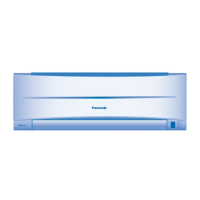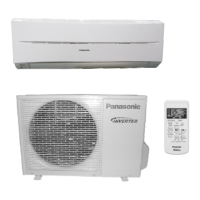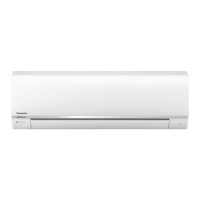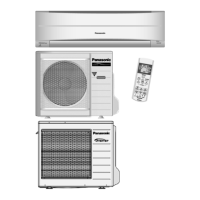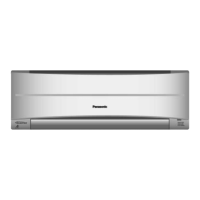1
1-46
Precautions when operating the 3-way valve for piping installation
●
Do not open the 3-way valve until the piping installation is completed.
• It is closed during shipment.
• During installation the side panel may warp if only the flare nut is loosened and tightened with a torque wrench. As a result,
always be sure to secure to the hexagonal part of the 3-way valve with a spanner, or other tool.
●
Refer to the following table for the tightening torque of the 3-way valve flare nuts.
• If the nuts are over tightened, they may cause the flares to break or leak.
●
Do not add additional force to the valve’s cover.
• Using spanners on the cover or valve itself (other than the hexagonal parts) may cause gas leakage.
Avoid using spanners on the cover or parts other than the hexagonal part of the valve.
Service port
Hexagonal part
of the valve
Valve shaft
Valve cap
Flare nut
Spanner
(Secure)
Torque
wrench
●
During the cooling mode operation under low ambient pressure, the low pressure side of the valve can be prone to freezing.
Secure the flare nut (shared gas side / liquid side) section of the valve with a silicone sealing agent to prevent this from occurring.
Silicone sealing agent
(Ensure not to leave any holes)
• Use an Allen wrench (Size 4 mm or 6 mm).
Direction to open
[3-way valve operation method]
Opening : Open the cover and turn the Allen wrench counter-clockwise until it stops.
Closing : Open the cover and turn the Allen wrench clockwise until it stops.
Precautions for handling the valve cap
●
Ensure not to scratch the inner surface of the valve or the end of the
valve shaft.
• Once adjustments to the valve are completed, ensure to tighten the
valve cap according to the prescribed torque.
Precautions for handling the service ports
●
Use a push-rod with a charge hose.
• Once adjustments to the valve are completed, ensure to tighten the
valve cap according to the prescribed torque.
Precautions for connecting the pipes
●
Ensure that the pipes do not come into contact with the compressor’s
bolts or exterior panel.
●
There is a risk of condensation from the 3-way valve coming out
between the insulation material and the indoor unit’s piping when you
install the outdoor unit above then the indoor unit. Ensure to caulk the
connection parts.
Precautions for insulation installation Maximum temperature limit of gas or liquid piping exceeds 120°C
●
In high humidity environment, reinforce the insulation material for the refrigerant piping. Failure to do so may result in
condensation on the surface of the insulation material.
●
Use materials with good heat-resistant properties as the heat insulator for the pipes. Ensure to insulate both the gas side and
liquid side pipes.
If the pipes are not adequately insulated, condensation and water leakages may occur.
●
Ensure that the current insulation covers the pipes up to the unit’s connecting part.
If the piping is exposed, it may cause condensation or burn (when touch the pipe).
Valve size Tightening torque
ø9.52
20.6N
•
m~28.4N
•
m
(2.1kgf
•
m~2.8kgf
•
m)
ø15.88
48.0N
•
m~59.8N
•
m
(4.8kgf
•
m~6.0kgf
•
m)
Valve size Tightening torque
ø9.52
20.6N
•
m~28.4N
•
m
(2.1kgf
•
m~2.8kgf
•
m)
ø15.88
48.0N
•
m~59.8N
•
m
(4.8kgf
•
m~6.0kgf
•
m)
Tightening torque
10.7N
•
m~14.7N
•
m
(1.1kgf
•
m~1.5kgf
•
m)
Tightening torque
10.7N
•
m~14.7N
•
m
(1.1kgf
•
m~1.5kgf
•
m)
Caulking treatment, etc.
Insulation
material
Piping
Caulking treatment, etc.
Insulation
material
Piping
Sec1.indb46Sec1.indb46 2012/03/0717:30:022012/03/0717:30:02
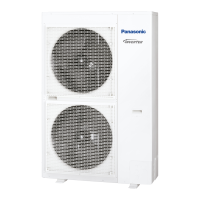
